INDIAN ARMED FORCES CHIEFS ON OUR RELENTLESS AND FOCUSED PUBLISHING EFFORTS

The insightful articles, inspiring narrations and analytical perspectives presented by the Editorial Team, establish an alluring connect with the reader. My compliments and best wishes to SP Guide Publications.

"Over the past 60 years, the growth of SP Guide Publications has mirrored the rising stature of Indian Navy. Its well-researched and informative magazines on Defence and Aerospace sector have served to shape an educated opinion of our military personnel, policy makers and the public alike. I wish SP's Publication team continued success, fair winds and following seas in all future endeavour!"

Since, its inception in 1964, SP Guide Publications has consistently demonstrated commitment to high-quality journalism in the aerospace and defence sectors, earning a well-deserved reputation as Asia's largest media house in this domain. I wish SP Guide Publications continued success in its pursuit of excellence.
- Operation Sindoor: Resolute yet Restrained
- India’s Operation Sindoor Sends a Clear Message to Terror and the World – ‘ZERO TOLERANCE’
- Japan and India set forth a defence cooperation consultancy framework, talks on tank and jet engines
- Terrorist Attack in Pahalgam in Kashmir: Unfolding a long surgical war against PAK
- Lt General Pratik Sharma takes over Command of Indian Army's Northern Command
China's Fujian & India's IAC-2
China's naval expansion underscores its strategic ambitions, necessitating India to bolster its maritime combat potential to maintain a balanced posture in the Indian Ocean Region (IOR)
 |
The Author is Former Director General of Information Systems and A Special Forces Veteran, Indian Army |
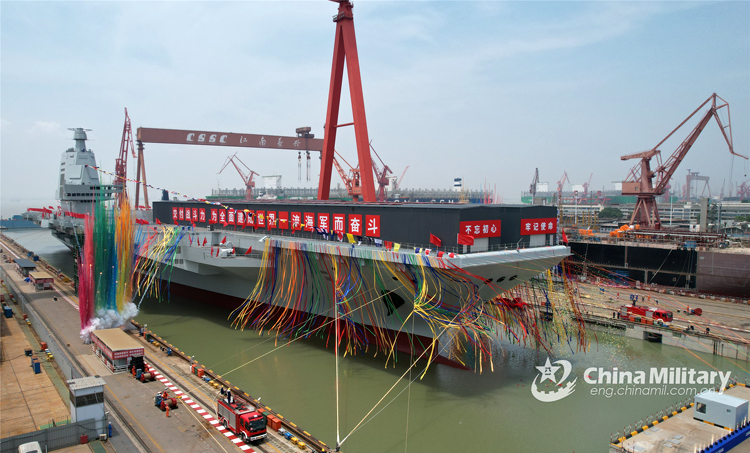
In 2012, China commissioned its first aircraft carrier 'Liaoning' and its second aircraft carrier 'Shandong' was launched in 2019. Liaoning was rebuilt on an unfinished Ukrainian aircraft carrier hull but Shandong is the first indigenous Chinese aircraft carrier. The 70,000-tonne 'Shandong' (Type 002) uses conventional steam turbines with diesel generators as propulsion and ski-jump for take-off similar to Liaoning. Improvements over Liaoning included the ski-jump angle reduced from 14 to 12 degrees for easier launch of the Shenyang J-15 fighter, enlarged hangar, larger deck space to accommodate up to eight more aircraft and helicopters, and an active electronically scanned arrays (AESAs) for the S-band Type 346 radar.
China recently commenced sea trials of its third aircraft carrier – 'Fujian'. The China Central Television showed live the Fujian leaving the Jiangnan Shipyard in Shanghai. The 80,000 metric tonne Type 003 class warship 'Fujian' on its maiden sea trial is only smaller than 'Nimitz' class (87,000 metric tonne) and 'Gerald R. Ford' class (1,00,000 metric tonne) aircraft carriers of the US Navy.
China's third aircraft carrier, 'Fujian', launched in June 2022, features advanced Catapult Assisted Take-Off & Barrier Arrested Recovery (CATOBAR) capabilities with an electromagnetic aircraft launch system (EMALS)
Taking its name from East China's Fujian Province and hull number 18, China's third aircraft carrier 'Fujian' was launched from the Jiangnan Shipyard in Shanghai on June 17, 2022 and is planned for entry into service by 2025-2026. According to China's official Xinhua news agency, construction of the Fujian proceeded according to plan, with mooring tests and equipment calibrations completed on time and the carrier acquiring technical readiness for sea trials. Fujian is expected to be tested in sea for over a year, primarily to check the reliability and stability of its propulsion and electrical systems.
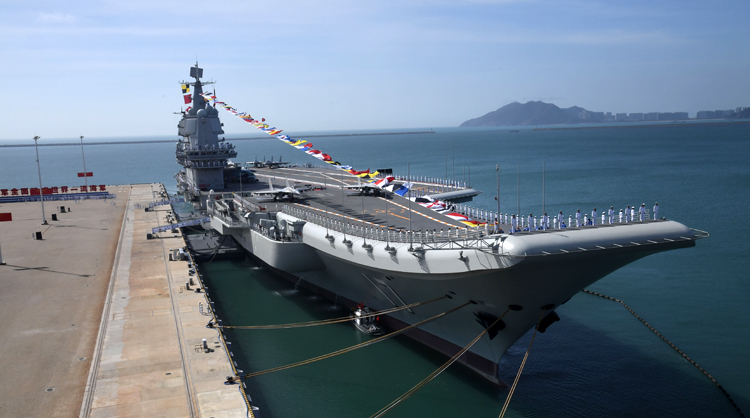
The Fujian features advanced Catapult Assisted Take-Off & Barrier Arrested Recovery (CATOBAR) capabilities with an electromagnetic aircraft launch system (EMALS). China has not made details of Fujian public but observers believe the aircraft carrier is capable of accommodating 3,000 personnel and can achieve top speeds of up to 31 knots (57 km/h). Fujian is 316 metres in length and displaces over 80,000 tonnes of water. It is powered by conventional fuel and its propulsion is based on conventional steam turbines with diesel generators. Speculation is that Fujian would host not only improved versions of China's J-15 fighter jet but also new aircraft, including the next-generation stealth fighter jet J-35, the fixed-wing early warning aircraft KJ-600 and the JL-10 advanced trainer jet.
The People's Liberation Army Navy (PLAN) aims to build six aircraft carriers by 2035 and a fleet of over 10 by 2050, highlighting its rapid naval expansion
The Peoples' Liberation Army's Navy (PLAN) has surpassed the US Navy numerically in terms of surface vessels and submarines. Globally, some 42 aircraft carriers are in operation in 13 navies but PLAN pace of expansion is truly impressive. The PLAN has an ambitious goal of building six aircraft carriers by 2035 and a fleet of over 10 aircraft carriers by 2050.
Construction of China's much more advanced 4th aircraft carrier commenced in December 2017 at Jiangnan Shipyard. Development of two prototype molten salt nuclear reactors cost $3.3 billion. It is a 110,000-tonne super-carrier Type 004 (larger than US Navy's 'Gerald R. Ford' class 1,00,000 tonne aircraft carrier) that would feature nuclear propulsion, an integrated electric system that will allow the operation of electromagnetic catapults, and support laser weapons and rail guns. The carrier is planned to operate a complement of J-15 and J-31 5th-generation fighters, Xian KJ-600 airborne early warning and control aircraft, anti-submarine warfare aircraft, and stealth attack drones.
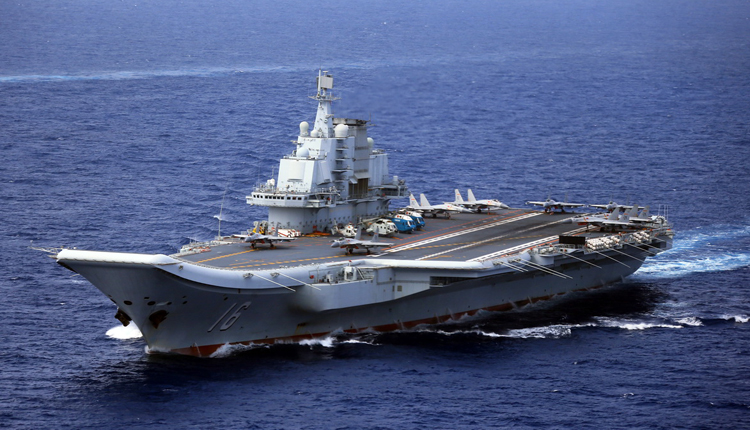
India became the first Asian country in 1961 to acquire an aircraft carrier, HMS 'Hercules' from the UK. Presently, India operates two aircraft carriers - INS 'Vikramaditya' acquired from Russia and INS 'Vikrant', India's first Indigenous Aircraft Carrier (IAC-1) having 14 decks, crew of 1,700 and ability to carry 36 aircraft.
Construction of China's fourth aircraft carrier began in December 2017; it will be a 110,000-tonne super-carrier with nuclear propulsion, supporting electromagnetic catapults, laser weapons, and rail guns
In January 2023, the Parliamentary Standing Committee on Defence had suggested the need for a third aircraft carrier, noting that their reach and flexibility was "far superior to military airfields in far-flung island territories". In November 2023, the Defence Procurement Board (DPB) moved a proposal to acquire a third aircraft carrier as early as possible but the same is still awaiting a green signal from the Ministry of Defence (MoD). The IAC-2 is expected to have a displacement of 45,000 tonnes and cost around ₹40,000 crore - similar to INS 'Vikrant', which was commissioned in September 2022.
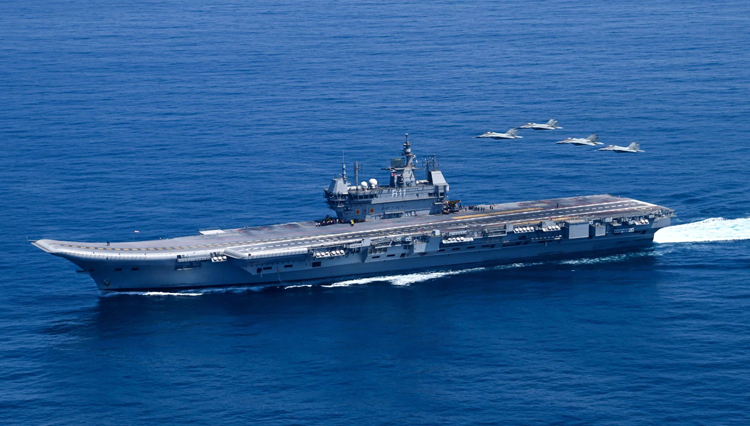
However, on May 14, 2024, Defence Minister Rajnath Singh announced that India will soon commence building its third aircraft carrier and has plans to make "five or six more", His statement came days after China's third and latest aircraft carrier, the 'Fujian', completed its maiden test voyage. Rajnath Singh's statement was in reference to the pending Indian Navy proposal to build another indigenous aircraft carrier – IAC-2.
Recent news reports indicate the 65,000-tonne (55 aircraft) INS 'Vishal', 'IAC-2' is planned to be built by Cochin Shipyard Limited, which is likely to cost around $8 billion. Earlier, the Indian Navy was also open to ordering another Vikrant class (45,000 tonne) STOBAR aircraft carrier. At the same time, EMALS for IAC-2 is still awaited from the US.
India currently operates two aircraft carriers, INS 'Vikramaditya' and INS 'Vikrant', and plans to commence building its third, with potential for five or six more
It is important to note that INS 'Vikramaditya', having been in service since 2014 (the original platform of 1980s Soviet vintage), will be due for replacement by 2030 or so. This militates against Indian Navy's requirement to have a minimum three aircraft carriers at all times, especially since one could be on maintenance.
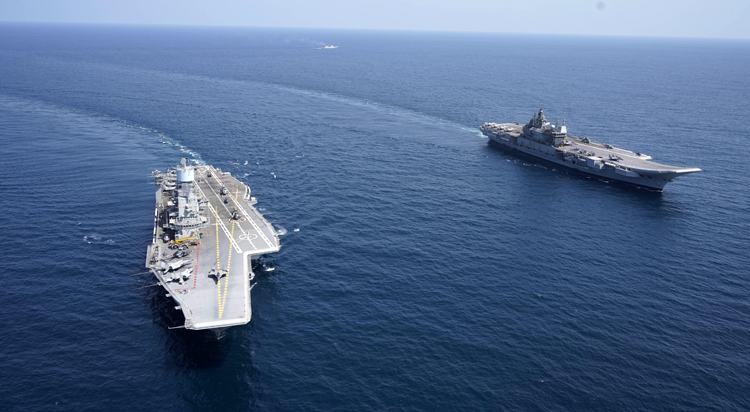
Chinese aircraft carriers or rather carrier-based groups (CBGs) are yet to appear in the Indian Ocean but its submarines, spy ships and hydrographic survey vessels have been prowling the region. The Fujian-based Chinese CBG could appear in the Indian Ocean Region (IOR) in 2025-2026 with PLAN already having logistics bases in Djibouti, Hambantota, and Gwadar, with plans to establish China-created logistics facilities in Maldives, Myanmar and Bangladesh.
China's swift naval expansion highlights its strategic ambitions while India is comparatively much slower in prioritising the security versus economy equation. As China strengthens its naval presence, we need to refocus on building India's maritime combat potential in order to maintain a balanced posture in the IOR.





